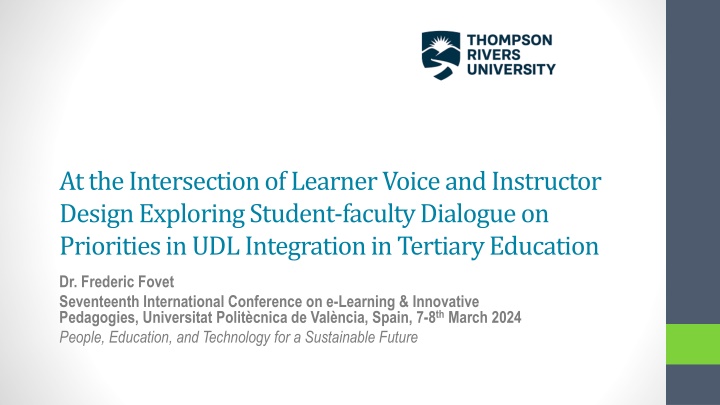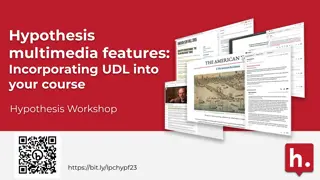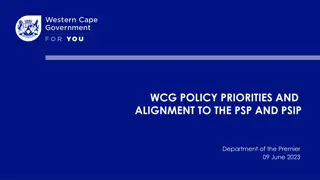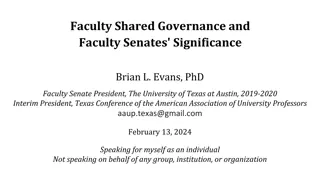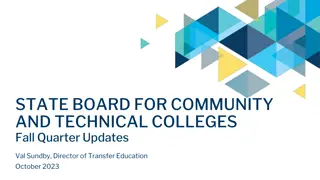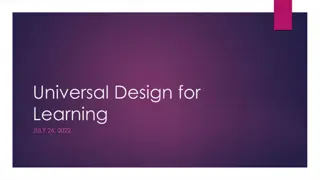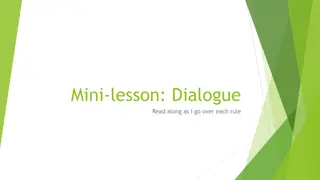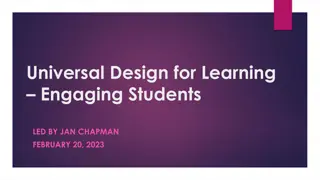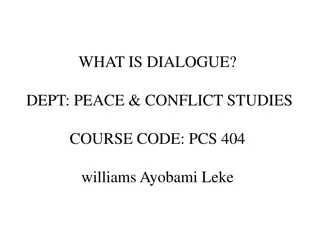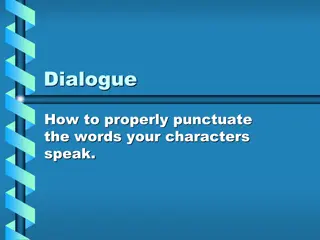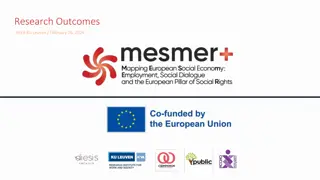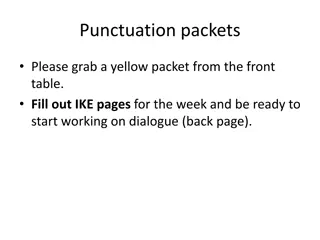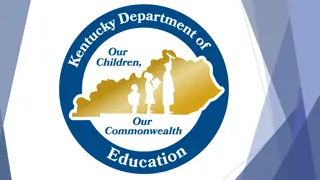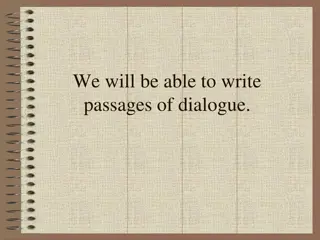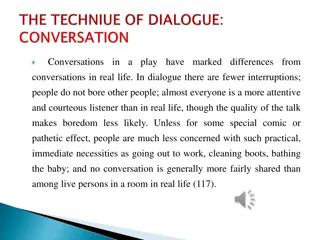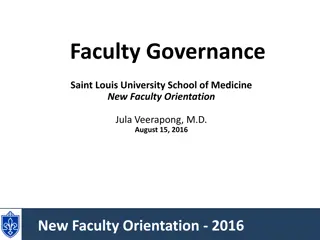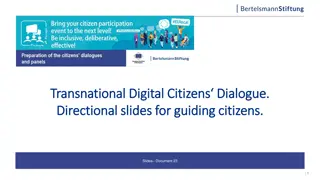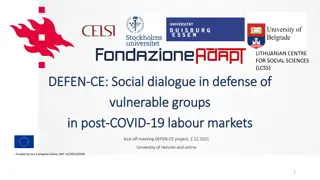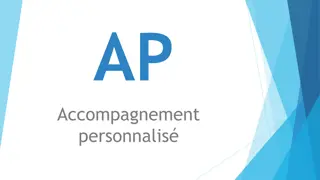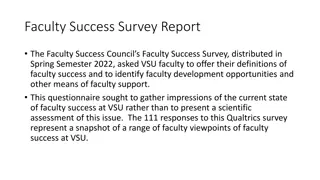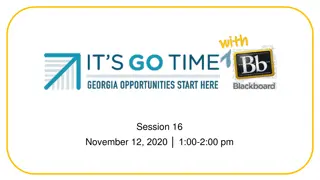Enhancing UDL Implementation: Student-Faculty Dialogue on Priorities
Growing interest in UDL for diverse learners in tertiary education raises the need for consensus on priority areas. This project explores creating student-faculty dialogue to identify common ground for inclusive pedagogical transformation, showcasing outcomes of qualitative research conducted on a Canadian campus.
Download Presentation

Please find below an Image/Link to download the presentation.
The content on the website is provided AS IS for your information and personal use only. It may not be sold, licensed, or shared on other websites without obtaining consent from the author.If you encounter any issues during the download, it is possible that the publisher has removed the file from their server.
You are allowed to download the files provided on this website for personal or commercial use, subject to the condition that they are used lawfully. All files are the property of their respective owners.
The content on the website is provided AS IS for your information and personal use only. It may not be sold, licensed, or shared on other websites without obtaining consent from the author.
E N D
Presentation Transcript
At the Intersection of Learner Voice and Instructor Design Exploring Student-faculty Dialogue on Priorities in UDL Integration in Tertiary Education Dr. Frederic Fovet Seventeenth International Conference on e-Learning & Innovative Pedagogies, Universitat Polit cnica de Val ncia, Spain, 7-8thMarch 2024 People, Education, and Technology for a Sustainable Future
Land Acknowledgement Thompson Rivers University campuses are on the traditional lands of the Tk'eml ps te Secw pemc (Kamloops campus) and the T exelc (Williams Lake campus) within Secw pemc'ulucw, the traditional and unceded territory of the Secw pemc. The region TRU serves also extends into the territories of the St t imc, Nlaka pamux, T ilhqot'in, Nuxalk, and Dakelh
Personal introduction Frederic is an Assistant Professor in the School of Education at Thompson Rivers University in BC, Canada The focus of his research is inclusion, UDL, accessibility, and social justice in teaching and learning He is a UDL and inclusion consultant both domestically and internationally supporting tertiary organizations and K-12 schools and school boards. https://kamino.tru.ca/experts/home/ main/bio.php?id=Ffovet
Objectives of the session Scan the current developments in UDL implementation across the tertiary sector in the Global North Examine divergent perspectives of faculty and students on priorities within Universal Design for Learning (UDL) implementation Discuss the current lack of student agency and voice within the UDL scholarship and momentum Examine best practices to include students in campus reflection on UDL Acknowledge inherent challenges in creating student-faculty dialogue around UDL
Abstract There is growing interest for UDL as a framework for the inclusion of diverse learners in the tertiary sector. Even when UDL is embraced and integrated on a campus, however, it quickly becomes evident that there can be many different and divergent areas of teaching and learning where UDL can be implemented and support change. There are so many possible avenues of transformation that it can become almost daunting for practitioners. This project examines the way a student-faculty dialogue can be created to identify where consensus might exist between these two groups of stakeholders as to what should take priority when it comes to the redesign of campus and classroom practices. It showcases the outcomes of a qualitative research process which took part on a Canadian campus, that brought together these two stakeholder groups to create authentic dialogue on inclusive pedagogical transformation.
Questions If you have any questions about the paper, do not hesitate to contact me on ffovet@tru.ca or via social media (@Ffovet on X)
Resources Baumann, T. & Melle, I. (2019). Evaluation of a digital UDL-based learning environment in inclusive chemistry education. Chemistry Teacher International, 1(2). https://doi.org/10.1515/cti-2018-0026 Burgstahler, S. E. (2015). Universal design in higher education. In S. E. Burgstahler (Ed.), Universal design in higher education (2nd ed., pp.3-28). Harvard Education Press. https://www.washington.edu/doit/resources/books/universal-design-higher-education-promising- practices Dalton, E. M., Lyner-Cleophas, M., Ferguson, B. T., & McKenzie, J. (2019). Inclusion, universal design and universal design for learning in higher education: South Africa and the United States. African Journal of Disability, 8, 519. doi: 10.4102/ajod.v8i0.519 Darrow, A.-A. (2015). Differentiated Instruction for Students With Disabilities: Using DI in the Music Classroom. General Music Today, 28(2), 29 32 Fovet, F. (2018) Exploring the Student Voice within Universal Design for Learning Work. The AHEAD Journal, 8. https://www.ahead.ie/journal/Exploring-the-Student-Voice-within-Universal-Design-for- learning-Work Fovet, F. (2014) Social model as catalyst for innovation in design and pedagogical change. Widening Participation through Curriculum Open University 2014 Conference Proceedings, 135-139
Resources (contd.) Krebs, E. (2019) Baccalaureates or burdens? Complicating reasonable accommodations for American college students with disabilities. Disability studies Quarterly, 39(3). https://dsq- sds.org/article/view/6557/5413 Kumar,, K.L., & Wideman, M. (2014) Accessible by Design: Applying UDL Principles in a First Year Undergraduate Course. Canadian Journal of Higher Education, 44(1), 125-147. https://eric.ed.gov/?id=EJ1028772 Lubicz-Nawrocka, T. (2022) Conceptualisations of curriculum co-creation: it s not them and us, it s just us . Curriculum Perspectives. https://doi.org/10.1007/s41297-022-00180-w Masika, R., & Jones, J. (2016). Building student belonging and engagement: Insights into higher education students experiences of participating and learning together. Teaching in Higher Education, 21(2), 138 150. https://doi.org/10.1080/13562517.2015.1122585 Mole, H. (2013). A US model for inclusion of disabled students in higher education settings: The social model of disability and Universal Design. Widening participation and lifelong learning, 14, 62-86.
Resources (contd.) Schreffler, J., Vasquez III, E., Chini, J., & Westley. J. (2019). Universal Design for Learning in postsecondary STEM education for students with disabilities: A systematic literature review. International Journal of STEM Education, 6(8). https://doi.org/10.1186/s40594-019-0161-8 Singleton, K., Evmenova, A., Jerom, M., & Clark, K. (2019) Integrating UDL Strategies into the Online Course Development Process: Instructional Designers' Perspectives. Online Learning, 1(23). http://dx.doi.org/10.24059/olj.v23i1.1407 Valle-Fl rez, R.-E., de Caso Fuertes, A. M., Baelo, R., & Garc a-Mart n, S. (2021). Faculty of Education Professors Perception about the Inclusion of University Students with Disabilities. International Journal of Environmental Research and Public Health, 18(21). http://dx.doi.org/10.3390/ijerph182111667
